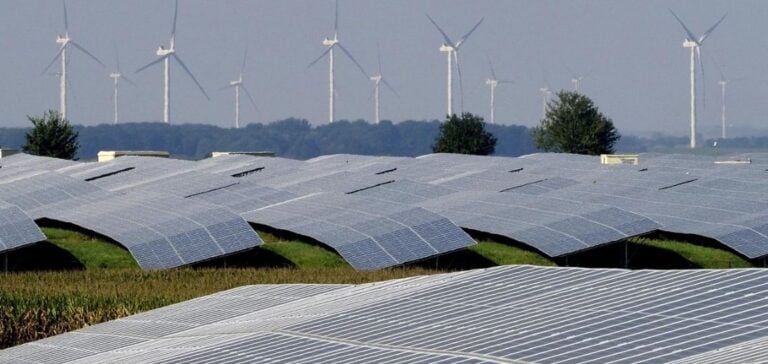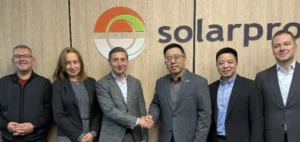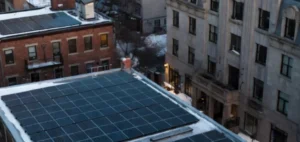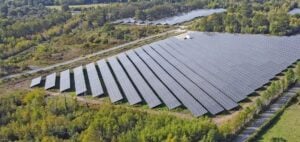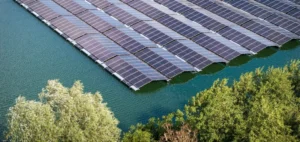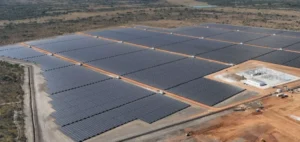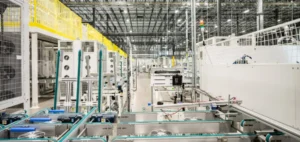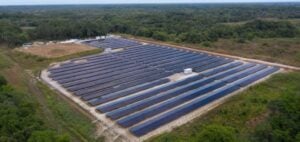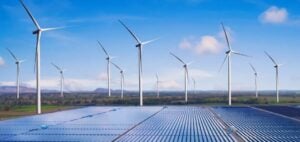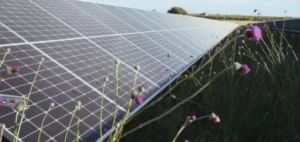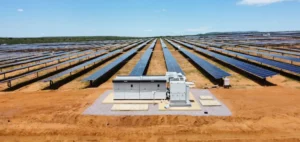RWE continues to make rapid progress in the production of green electricity in the Rhine mining region. The new photovoltaic plant, named RWE Neuland Solar Farm, has a capacity of 12 megawatt-peak (8.4 MWac) and comprises 22,000 bifacial solar modules. These modules, which are light-sensitive on both sides, use not only direct sunlight but also light reflected from the ground, increasing their efficiency. The plant produces enoughgreen electricity to power more than 3,100 German households. The plant’s battery storage system is designed for a two-hour charge/discharge cycle, with a capacity of over eight megawatt-hours. It acts as a buffer between generation and the grid, guaranteeing a stable, continuous supply of electricity.
Sustainable temporary use of the area
The plant site is located on a gravel field near the future Hambach lake. While the lake will only be completely filled with water in around 40 years’ time, RWE is using the area to generate green energy, thus contributing to the energy transition.
Lars Kulik, CTO Lignite at RWE Power, said, “This solar power plant is the visible manifestation of how structural change and energy transition can succeed.”
Continued expansion of renewable energies
RWE doesn’t stop there. Alongside the RWE Neuland Solar Farm, another photovoltaic power plant, the RWE Neuland 1 Solar Farm, is currently under construction. In the first construction phase, 36,700 modules with a combined capacity of 20 megawatt-peak (17.6 MWac) are installed. The second phase, scheduled for this summer, will add a further 15.2 megawatt-peak (12 MWac). At the same time, RWE is planning another solar power plant at the Hambach open-cast mine. The company plans to jointly manage these solar projects with Neuland Hambach GmbH, a company coordinating structural change around the open-cast mine.
RWE’s commitment to green energy in Germany
With over 20 years’ experience in the development, construction and operation of renewable energy plants, RWE continues to expand its activities in Germany. The company operates onshore wind farms and solar farms with a total installed capacity of around 700 megawatts, including four combined solar-storage power plants in the Rhine mining region. In addition, RWE’s first Agri-PV demonstration plant was built on recultivated land, formerly part of the Garzweiler open-pit mine. In total, RWE plans to invest around €11 billion net in green generation capacity in Germany over the next seven years.
The rapid development of the RWE Neuland Solar Farm and associated projects illustrates RWE’s commitment to energy transition and technological innovation. These initiatives not only increase Germany’s renewable energy production capacity, they also demonstrate how former mining areas can be transformed into sustainable energy production sites.


